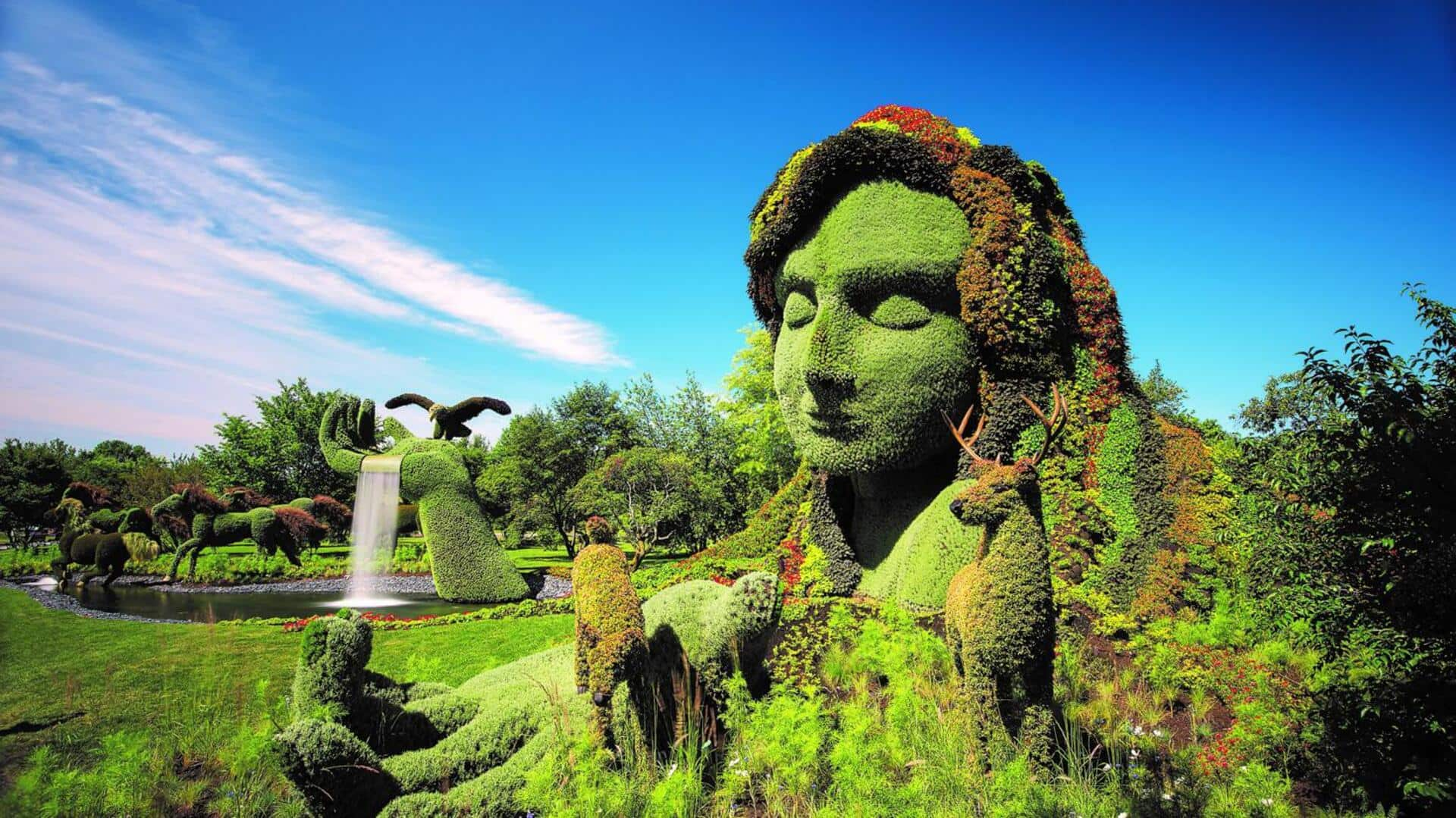
Mosaiculture: Exploring its origin, evolution, and techniques
What's the story
Mosaiculture is a sophisticated horticultural art form blending sculpture, painting, and landscaping.
It involves creating large-scale, three-dimensional figures using plants and flowers as the "paint" on a "canvas" of meticulously shaped steel frames.
This artistic expression goes beyond aesthetics. It fosters a deeper appreciation for nature by encouraging environmental consciousness and sustainability.
History
The origins and evolution of mosaiculture
The art of mosaiculture originated in the 16th century and became popular in the 19th century in Europe.
It started as a method to adorn the grand gardens of the aristocracy with floral designs.
Gradually, it became more intricate, with life-sized figures and detailed scenes from nature or mythology.
Now, mosaiculture competitions draw artists globally, demonstrating their skills in turning thousands of plants into stunning sculptures.
Craftsmanship
Techniques behind the green magic
The process of creating a mosaiculture piece involves several steps:
1. Designing the sculpture and building a metal frame to match the desired shape.
2. Adding layers for soil and irrigation systems within the frame.
3. Planting flowers and foliage chosen for their color compatibility and ability to thrive together.
This process can take several months for complex pieces, but it ensures the sculpture will stay vibrant throughout its display.
Showcases
Iconic mosaiculture exhibitions around the world
Many cities are famous for their annual or biennial mosaiculture exhibitions.
Montreal's International Mosaicultures Show, which draws artists from around the globe to the Montreal Botanical Garden, is a key highlight.
Atlanta's Imaginary Worlds exhibition, meanwhile, captivates with mythical creatures brought to life through plant sculptures.
These exhibitions offer visitors the chance to witness the extraordinary blend of artistry and horticulture firsthand.
Green practices
Environmental impact and sustainability practices
Mosaiculture holds numerous benefits for urban environments.
By introducing more green spaces and fostering biodiversity within cities.
Exhibitions also prioritize sustainability, utilizing recycled materials for structures and selecting locally sourced plants to minimize carbon footprints.
Plus, many displays incorporate educational elements about conservation efforts or endangered species featured in some sculptures, fostering environmental awareness among visitors.
Getting started
Tips for aspiring mosaic artists
For enthusiasts eager to try mosaiculture, start with simple designs and choose sturdy plants adapted to your climate.
Exploring online tutorials or taking classes at local botanical gardens can provide valuable knowledge.
Patience is key; as you grow in experience, so will your ability to create complex masterpieces that could be showcased at international exhibits.